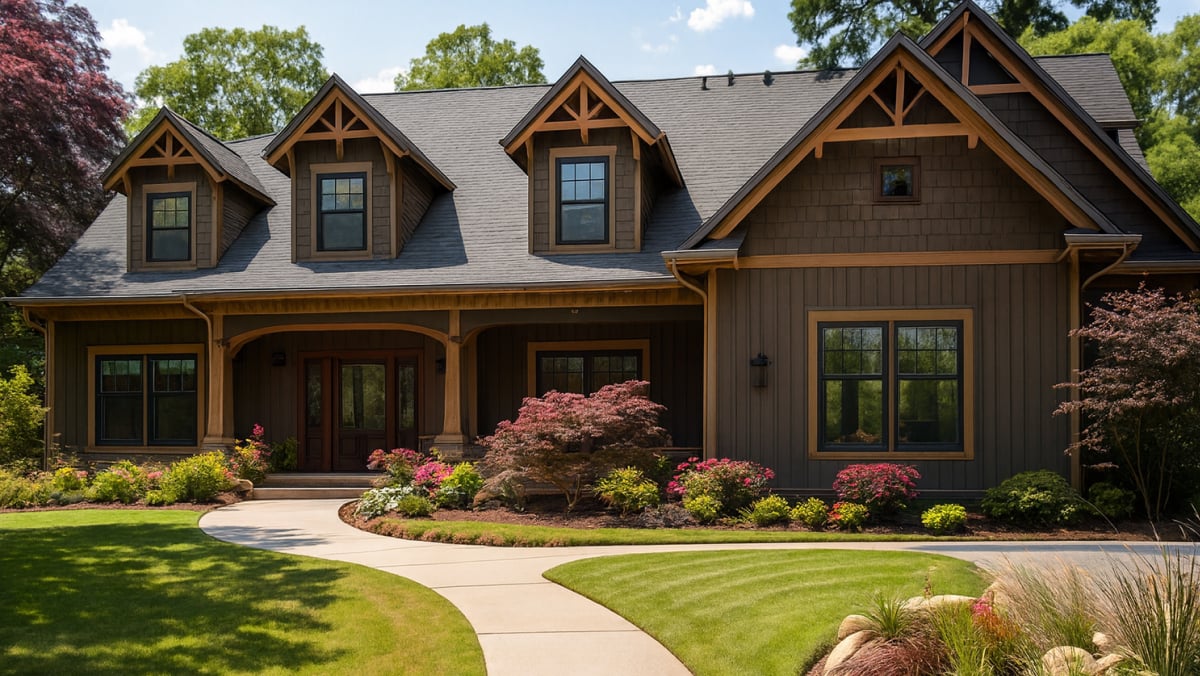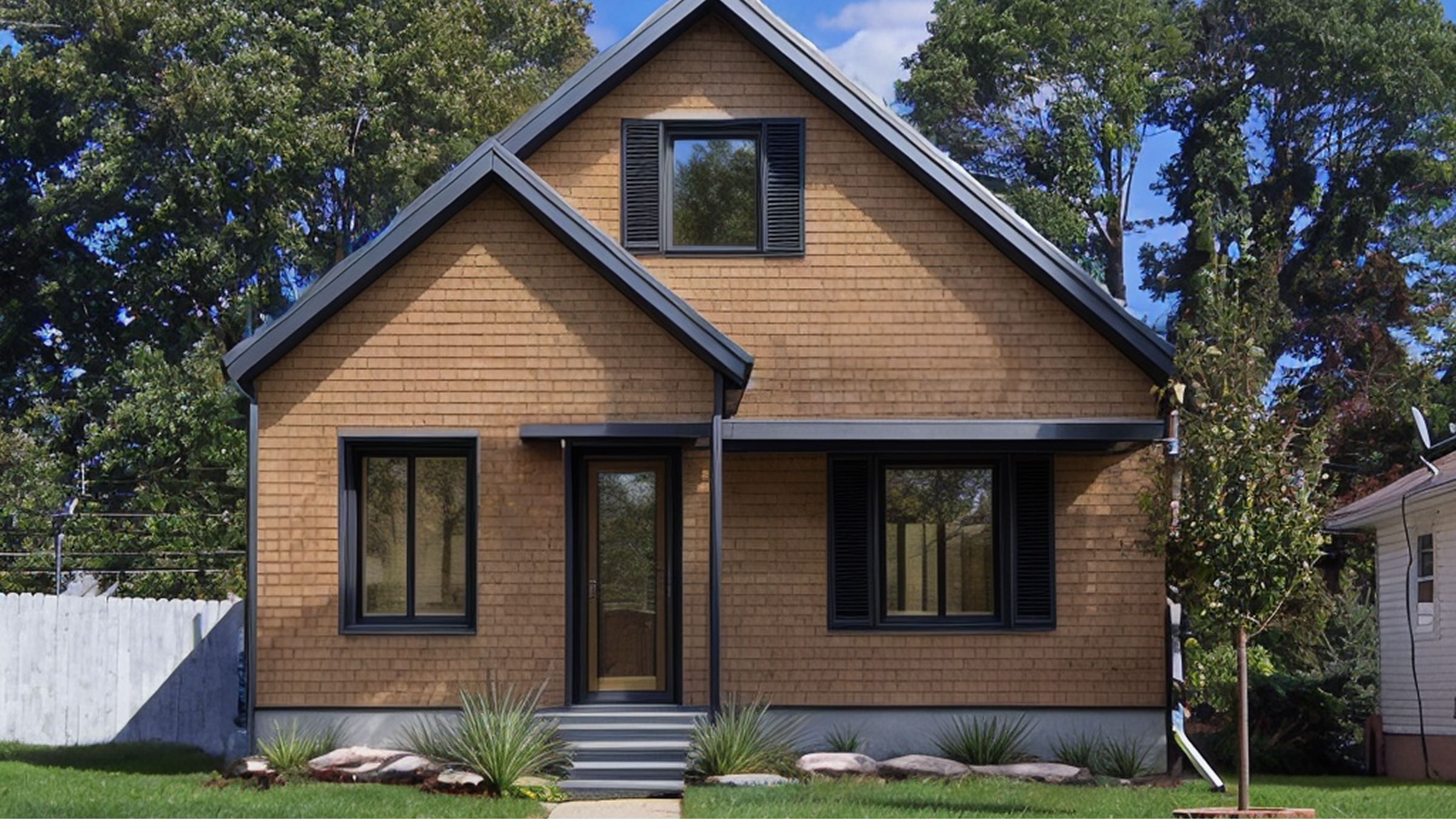Solar power is increasingly popular as a reliable and renewable energy source. Advances in technology have made solar energy conversion more accessible and affordable. With Hover, explore the unique features of solar shingles, their benefits and drawbacks, and the top brands available on the market today.
What are solar shingles?
Solar shingles, also known as Building-Integrated Photovoltaics (BIPV), represent a cutting-edge innovation in the realm of renewable energy. They are designed to mimic the appearance of traditional roofing materials while simultaneously harnessing solar energy. Unlike conventional solar panels that are installed on top of existing roofing, solar shingles are integrated directly into the roof structure. This dual functionality means that they not only provide the same protective qualities as regular shingles but also generate electricity from sunlight.
Solar shingles come in various designs and materials, aiming to blend seamlessly with traditional roofing materials such as asphalt or slate. This integration helps maintain the aesthetic appeal of a home, making solar energy accessible without compromising on visual appearance. The design of solar shingles allows them to function as a part of the roofing system, contributing to a more cohesive look compared to the bulkier traditional solar panels.
Overall, solar shingles offer a modern approach to sustainable energy solutions, merging functionality with design to create an innovative roofing option.
How do solar shingles work?
Solar shingles operate on principles similar to those of traditional solar panels, but their integration into roofing materials offers a more streamlined solution. At the core of solar shingles are photovoltaic (PV) cells, which capture sunlight and convert it into electricity. Here’s a step-by-step breakdown of how solar shingles generate power:
- Sunlight absorption: The photovoltaic cells embedded in the shingles absorb sunlight. This light energy excites the electrons in the cells, creating an electric charge.
- Electricity production: As the electrons move, they create a flow of electric current. This process generates direct current (DC) electricity.
- Electricity conversion: The DC electricity generated by the solar shingles is then directed to an inverter. The inverter converts this DC power into alternating current (AC) electricity, which is the type used by household appliances and the electrical grid.
- Distribution: Once converted to AC power, the electricity is either used directly by the home or fed into the grid, depending on the system’s configuration.
Solar shingles integrate these components into a single, unified roofing material. This design not only allows for energy generation but also maintains the protective and aesthetic functions of traditional roofing.
Solar shingles vs solar panels -- which is better?
When considering solar energy solutions, it’s essential to compare solar shingles and traditional solar panels. Each option has its unique features, benefits, and drawbacks:
| Feature | Solar Panels | Solar Shingles |
| Size | Traditional panels are typically 39" x 65" | Singles measure around 12" x 86" |
| Cost | Installation costs range from $5,000 - $35,000 | Costs range from $63,000 - $75,000 |
| Output | Panels produce 100-400W per unit | Shingles produce 13-70W per unit |
| Efficiency | Panels offer efficiency up to 23% | Shingles have an efficiency of 14-18% |
| Appearance | Panels are often blue or black | Shingles are typically black |
What to consider between solar shingles and panels?
- Size: Solar panels are larger, covering a more extensive area of the roof, which can lead to higher energy output but also require more space. Solar shingles, being closer in size to traditional shingles, integrate more seamlessly with the roof's design.
- Cost: The higher cost of solar shingles is a significant consideration. Their installation is more expensive than traditional panels, which can impact the overall return on investment.
- Output: Solar panels generally offer higher energy output and efficiency compared to solar shingles. This difference is due to the larger surface area and the ability to angle panels for optimal sun exposure. Solar shingles, while aesthetically pleasing, may require more units to achieve the same energy production.
- Appearance: One of the main advantages of solar shingles is their appearance. They blend with the roof, providing a more uniform look compared to the distinct and sometimes bulky appearance of traditional solar panels.
Advantages of solar shingles
Solar shingles offer several advantages over traditional solar panels, making them an appealing option for some homeowners:
- Aesthetics: One of the most significant benefits of solar shingles is their appearance. They are designed to blend seamlessly with existing roofing materials, providing a sleek and uniform look. This design is especially beneficial for homeowners who want the benefits of solar energy without the visual impact of traditional panels.
- Functionality: Solar shingles serve a dual purpose—they function as both roofing material and a solar energy generator. This integration simplifies the installation process and reduces the need for additional structures or mounts, making it a practical solution for new constructions or roof replacements.
- Durability: Solar shingles are often more durable than traditional roofing materials. They are designed to withstand harsh weather conditions, including heavy rain, snow, and high winds. Their durability can extend the lifespan of the roof compared to conventional shingles.
- Weather resistance: Being part of the roofing system, solar shingles are less likely to become dislodged or damaged during extreme weather events. This integration provides an added layer of protection for the home.
Disadvantages of solar shingles
While solar shingles offer various benefits, there are also notable disadvantages to consider:
- Expensive: One of the most significant drawbacks of solar shingles is their cost. They are generally more expensive than traditional solar panels, which can impact the overall return on investment. The higher installation cost can be a barrier for some homeowners.
- Lower efficiency: Solar shingles typically have lower efficiency compared to traditional solar panels. Their efficiency is often constrained by their fixed position on the roof and the inability to angle them for optimal sunlight exposure. As a result, more shingles may be needed to achieve the same energy output as panels.
- Installation limitations: Solar shingles are better suited for new constructions or complete roof replacements rather than retrofitting onto existing roofs. The integration process can be complex and may require additional modifications to the existing roofing structure.
Best solar shingle brands
CertainTeed
CertainTeed is renowned for its commitment to sustainability and high-quality building materials. Their Apollo II solar roof tiles are a testament to this commitment, designed to offer both functionality and durability. These solar shingles can withstand up to 250 pounds of pressure per square foot and are rated to endure winds of up to 150 miles per hour, making them a robust choice for homeowners in areas prone to extreme weather.
GAF
GAF is North America's largest roofing manufacturer and has made a significant entry into the solar shingle market with its DecoTech system. GAF's DecoTech offers a low-profile design that integrates seamlessly with existing roofing systems, providing a sleek and aesthetically pleasing appearance. Unlike traditional bulky solar panels, DecoTech solar shingles are installed in line with the roof, maintaining the home's original look while harnessing solar energy.
Tesla
Tesla has brought its innovative spirit to the solar shingle market with its Solar Roof. Tesla's solar shingles are available in two styles: smooth and textured black glass, catering to different aesthetic preferences while maintaining a modern and sleek look. These shingles are designed to integrate seamlessly with the rest of the roof, creating a uniform appearance that traditional solar panels cannot match.


-1.jpg)
